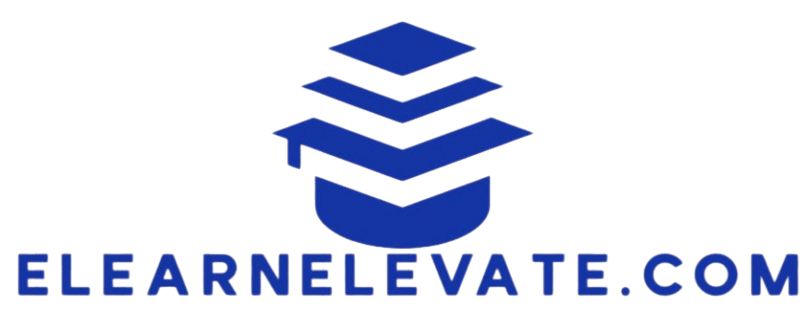The Importance of Strategic Planning in Business
In today s fast-paced business landscape, strategic planning is not just beneficial; it s essential for long-term success. Think of it as your organization s roadmap, expertly guiding you toward your goals while remaining agile in the face of changing environments.
This article delves into the definition and purpose of strategic planning, showcasing its myriad benefits, including enhanced decision-making and a clearer vision for your future.
You ll discover the key components of an effective strategic plan, explore implementation strategies, and address the common challenges that many businesses encounter along the way.
Join us as we uncover the game-changing power of strategic planning for your organization!
Contents
Key Takeaways:

- Strategic planning gives your business a clear vision and direction.
- Using SWOT (Strengths, Weaknesses, Opportunities, Threats) analysis and defining goals leads to better decisions.
- Successful implementation requires defined roles and adaptability.
Understanding Strategic Planning
Strategic planning is a careful, ongoing process that ensures your organization s mission and vision align with its long-term objectives.
This approach not only helps you navigate the competitive landscape but also allows you to adapt seamlessly to evolving market conditions.
It serves as the backbone of a robust business strategy, offering a clear framework for resource allocation, goal setting, and involving everyone affected by your business.
Ultimately, this enhances your organizational effectiveness and elevates your performance metrics to new heights.
The Benefits of Strategic Planning
Engaging in strategic planning brings an array of benefits, including a clear long-term vision that propels you toward sustainable success.
This approach also improves decision-making in today s competitive market.
By investing in thoughtful planning, you position yourself to navigate challenges with confidence and clarity.
Long-Term Vision and Direction

Having a long-term vision is essential for you and your organization; it serves as your guiding star, steering your efforts toward strategic objectives that align perfectly with your overarching goals.
This vision helps you maintain focus amidst the complexities of daily operations and cultivates a culture of innovation and adaptability.
By anticipating industry trends, you can better position your company to leverage emerging opportunities while navigating potential challenges.
A clear long-term direction instills a sense of purpose among your employees and stakeholders, significantly enhancing engagement and collaboration.
Ultimately, when your organization s strategic objectives resonate with larger business ambitions, you create a powerful synergy that drives sustainable growth and resilience in a competitive landscape.
Improved Decision Making
Improved decision-making stands out as one of the most significant advantages of strategic planning, enabling you to make data-driven choices while deftly sidestepping cognitive biases that can cloud your judgment.
By engaging in a comprehensive strategic planning process, you can systematically gather and analyze valuable stakeholder feedback, ensuring that a wide array of perspectives is considered.
This collaborative approach enriches your decision-making landscape and cultivates a culture of inclusivity within your organization.
Integrating performance metrics into your planning framework enhances your ability to objectively evaluate outcomes and make informed adjustments. Recognizing how cognitive biases, such as confirmation bias and anchoring, shape your choices can lead you to a more disciplined analysis.
With this understanding, you can navigate complex scenarios with increased confidence and effectiveness.
Take the first step today towards a brighter future for your business with strategic planning!
Key Components of a Strategic Plan
A robust strategic plan consists of several vital components that ensure its effectiveness. You ll begin with a clear mission statement that defines your purpose, followed by an inspiring vision statement that paints a picture of your aspirations.
A thorough SWOT analysis will provide insight into your strengths, weaknesses, opportunities, and threats. Well-defined goals and objectives will align seamlessly with your organization s strategic direction.
This comprehensive approach is essential for navigating the complexities of your business landscape.
Mission and Vision Statements

Mission and vision statements are foundational elements in your strategic planning. They clearly articulate your organization s core purpose and aspirations.
These statements do more than just outline a path; they inspire your employees and infuse a sense of purpose into their daily work.
When the objectives of your team resonate with the broader vision, it creates a collaborative atmosphere. This enhances motivation and engagement, boosting strategic initiatives.
By consistently referring to these guiding principles, you can effectively navigate challenges and adapt to changes while maintaining a steadfast focus on your long-term aspirations.
SWOT Analysis
SWOT analysis is an exceptional tool for strategic planning. It enables you to pinpoint your strengths and weaknesses while also evaluating the opportunities and threats in your external environment.
By looking into these components, you can extract valuable insights that shape your strategic objectives. This framework underscores what your organization excels at and reveals areas ripe for improvement.
It highlights external opportunities for growth and identifies potential threats that could impede your progress. SWOT analysis is essential for informing resource allocation and ensuring your efforts are strategically aligned with your goals.
Goals and Objectives
Establishing clear goals and objectives is crucial for any strategic plan. They act as measurable performance metrics that guide your actions and make sure you re moving forward effectively.
By adopting the SMART criteria Specific, Measurable, Achievable, Relevant, and Time-bound you can significantly enhance clarity and focus in your initiatives.
This structured approach allows you to define your aspirations in a way that feels relatable and achievable. It fosters a sense of responsibility within your team.
When stakeholders understand the precise parameters of what they aim to achieve, it paves the way for coordinated efforts and a shared vision. These definitive benchmarks ultimately create a framework for evaluating progress and making necessary adjustments.
Implementing a Strategic Plan

To effectively implement a strategic plan, you must have a clear grasp of roles and responsibilities within your organization. Act now to ensure everyone understands their part.
Coupled with robust project management practices and consistent performance tracking, this understanding will ensure alignment with your strategic objectives. Start implementing these strategies today for a stronger future.
Roles and Responsibilities
Defining clear roles and responsibilities is essential for the successful execution of your strategic plan. This ensures that every team member understands their contributions and the significance of cross-functional collaboration.
When you establish this clarity, it fosters a sense of ownership among individuals, enhancing accountability. Team members are far more likely to fulfill their commitments when they know precisely what is expected of them.
Well-articulated roles encourage stakeholders to engage actively in the process. This leads to more effective decision-making. By nurturing an environment where everyone understands their specific tasks and how they align with broader strategic objectives, you can streamline collaboration and improve overall project outcomes.
A structured approach reduces confusion and miscommunication, paving the way for a more cohesive execution strategy.
Monitoring and Evaluation
Monitoring and evaluating the strategic plan is crucial for assessing its effectiveness. By doing so, you can track performance against important measures of success and foster a culture of continuous improvement.
This process goes beyond just following rules; it acts as an essential tool to keep your organization aligned with its objectives. By establishing a robust monitoring and evaluation framework, you can identify strengths and uncover performance gaps in real-time.
This proactive approach allows you to make swift adjustments. It ensures that your strategies remain relevant in a constantly shifting landscape. It also sets the stage for well-considered choices, enabling you to refine your tactics and boost overall effectiveness.
In this dynamic environment, grasping the intricacies of performance tracking is vital for reaching your long-term goals.
Common Challenges in Strategic Planning
You may encounter familiar challenges in your strategic planning journey, such as overcoming resistance to change. These obstacles can significantly hinder the effective execution of your strategies.
They can also compromise your risk management efforts.
Overcoming Resistance to Change
Overcoming resistance to change is essential for enhancing your organization s effectiveness. This often arises from unclear communication and a lack of understanding among stakeholders.
To navigate this complex landscape successfully, prioritize open dialogue and actively seek feedback from those impacted by proposed changes. By creating an environment where every voice is heard, your organization not only fosters trust but also encourages collaboration.
Implementing educational initiatives that explain the rationale behind changes can alleviate fears and misunderstandings. This helps stakeholders recognize the benefits of the transition.
Leadership is pivotal in this process! By being approachable and responsive to concerns, you can guide your teams through uncertainty and align collective efforts towards a shared vision. Don’t let resistance slow you down! This is your chance to unlock potential and drive transformation!
Adapting to Changing Environments
Adapting to changing environments is key for long-term success. Stay attuned to industry trends and use flexible strategies.
Robust risk management frameworks are essential. They help you navigate uncertainties with confidence.
Foster a culture of continuous improvement within your teams. This helps identify threats and opportunities quickly.
Embrace flexibility to enhance resilience. This positions you to meet evolving consumer demands.
Regularly assess market conditions. This leads to better choices and keeps your organization competitive.
Frequently Asked Questions
What is strategic planning in business?
Strategic planning in business is the process of setting long-term goals and creating a roadmap to achieve them. It involves analyzing the current state of the business, identifying potential challenges and opportunities, and developing strategies to meet business objectives.
Why is strategic planning important in business?
Strategic planning is crucial for business success as it helps organizations stay focused, adapt to changing market conditions, and make informed decisions. It also provides a clear direction for employees and ensures that resources are allocated effectively.
How does strategic planning benefit a business?
Strategic planning brings many benefits to a business, including improved decision-making, increased efficiency, enhanced communication, and better alignment of resources with business goals. It also helps businesses stay proactive and better prepared for the future.
What are the key elements of strategic planning in business?
The key elements of strategic planning in business include defining the mission, vision, and values of the company, conducting a SWOT analysis, setting realistic goals and objectives, creating a strategic roadmap, and regularly monitoring and adjusting the plan as needed.
What are some potential challenges of strategic planning in business?
Some challenges of strategic planning in business include lack of resources, conflicting priorities, resistance to change, and difficulty in predicting the future. Organizations must address these challenges and remain flexible in their planning process.
How often should a business revisit its strategic plan?
A business should revisit its strategic plan at least once a year to ensure it remains relevant and effective. However, in periods of significant change or when facing unexpected challenges, it may be necessary to review the plan more frequently.






